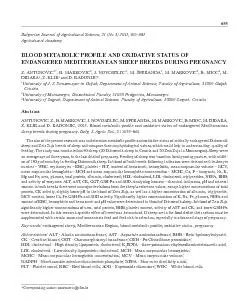PDF-Health Meets Food through a Metabolic Matrixthis prototype and bring i
Author : dandy | Published Date : 2022-09-01
1 Governments and the private sector are called upon to cooperate on a regional level in order to mitigate the impact of global health risks affecting their populations
Presentation Embed Code
Download Presentation
Download Presentation The PPT/PDF document "Health Meets Food through a Metabolic Ma..." is the property of its rightful owner. Permission is granted to download and print the materials on this website for personal, non-commercial use only, and to display it on your personal computer provided you do not modify the materials and that you retain all copyright notices contained in the materials. By downloading content from our website, you accept the terms of this agreement.
Health Meets Food through a Metabolic Matrixthis prototype and bring i: Transcript
Download Rules Of Document
"Health Meets Food through a Metabolic Matrixthis prototype and bring i"The content belongs to its owner. You may download and print it for personal use, without modification, and keep all copyright notices. By downloading, you agree to these terms.
Related Documents














